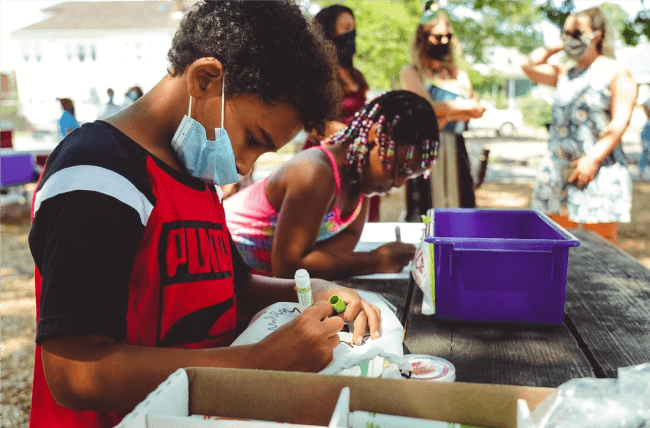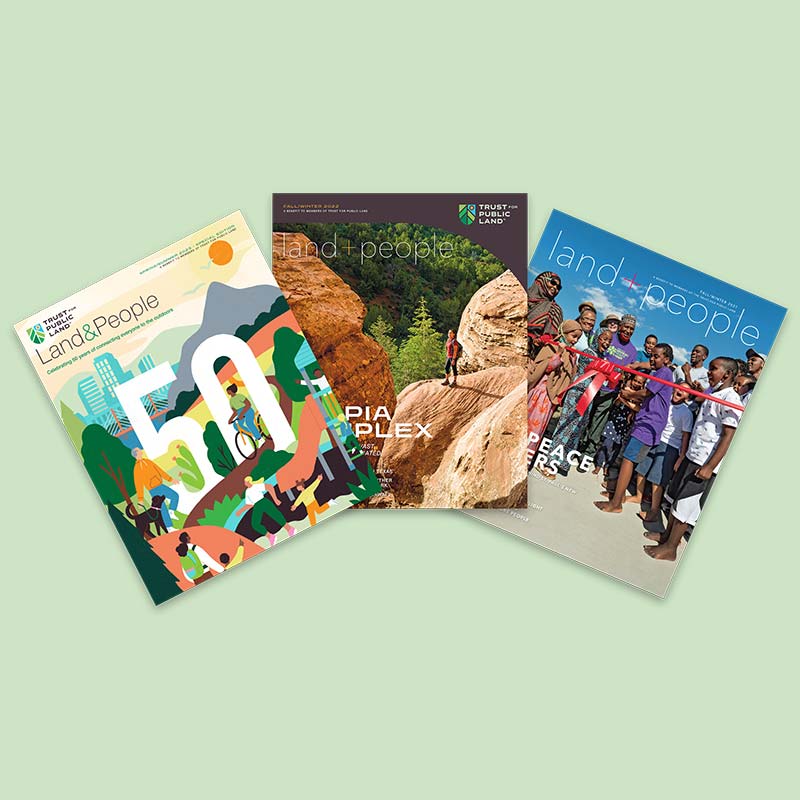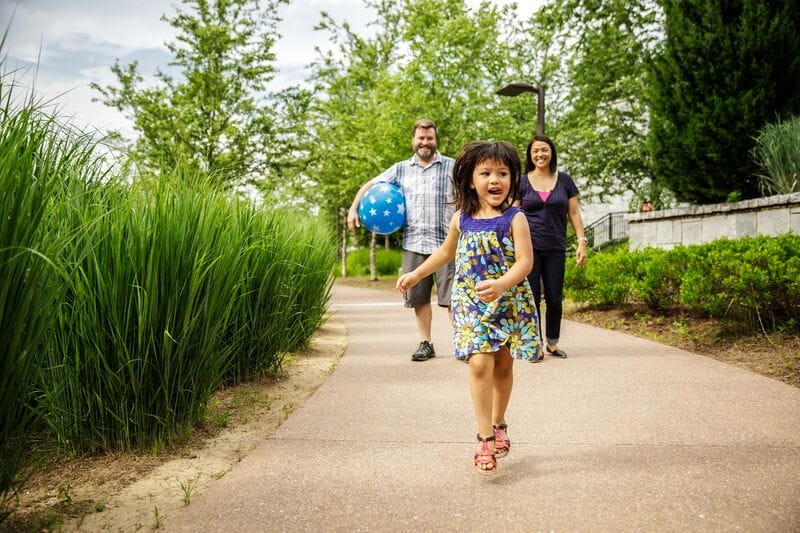We are celebrating the amazing work of the community-based organizations awarded with 10-Minute Walk grants by Trust for Public Land.
The first three rounds of the 10-Minute Walk™ Partnership Fund projects are wrapping up, and we are celebrating the excellent work of the 32 community-based organizations awarded a Partnership Fund grant. Since 2019, the Partnership Fund administered almost $1.2 million in grants to nonprofit community-based organizations working to advance parks goals within 10-Minute Walk cities throughout the United States.
These grants supported projects aimed at solidifying and building partnerships that support a wide variety of aspects of our urban parks and green spaces systems—from designing sites to improving accessing to creative stewardship and promoting engagement. Each project leveraged the unique role that these community-based organizations play in their communities. While the COVID-19 global pandemic necessitated shifts in project goals and their delivery, grantees displayed flexibility, entrepreneurship, and creativity in crafting plans to move their projects forward and best meet the needs of their communities.
“The 10-Minute Walk Campaign’s goal with the Partnership Fund is to find creative ways to support cities in advancing their equitable parks access goals, and to amplify community voice in the development, improvement, and programming of urban parks. Partnership Fund grantees were instrumental in bringing community members together around parks, ensuring that parks really do meet the needs of community members, and strengthening capacities to engage in the long-term with city leaders and processes,” said Bianca Shulaker, director of the 10-Minute Walk Campaign.

Providence youth making art in the park with an art kit created by P3. Photo: Trust for Public Land staff
“In 2017, I joined over 100 mayors from around the country to launch the ’10-minute walk’ parks advocacy campaign, establishing the ambitious goal that all Americans live within a 10-minute walk (or half a mile) of a park or green space,” said Jorge Elorza, mayor of Providence, Rhode Island. “I am proud to say that we have reached this goal, with 100% accessibility offered to residents and visitors across the city! Working with our Parks Department and the community, we’re providing even greater opportunities for residents and their children to not only spend quality time outdoors but also bring people closer together, to share ideas, and ultimately help build a stronger and healthier community.”
The results of the projects have been impressive. From new partnerships to city-wide park initiatives to community-directed programming, Partnership Fund grantees have been able to increase park access and use in their communities. Grantees have also helped the 10-Minute Walk Campaign better understand the most effective ways to connect community-based organizations and city leaders. The major recommendations that emerged over the three-year period include
Cities Centering Community
The most successful projects tend to align, integrate with or advance a city’s policies and/or programs related to parks and green spaces. Early engagement between city decision-makers and CBOs and other stakeholders also helped to promote implementation and sustainability of projects. For example, in Atlanta, Georgia, Park Pride piloted a green schoolyard program—to demonstrate the potential of joint-use agreements between public schools and local communities—that was later adopted as a citywide initiative. And the St. Paul district councils deepened their relationship with the city’s parks and recreation staff, gained a better understanding of needed policy adjustments, and gained awareness of municipal relationships required to move projects forward as a result of their Partnership Fund projects.
Pursue Buy-In from Key Stakeholders
Engaging community members and other potential stakeholders increases the likelihood of project implementation. The benefits of community engagement were further amplified for projects designed to reach historically marginalized communities. For example Bicycle Colorado in Denver targeted outreach, education programs, safe routes maps, and bike repair and lending services to two neighborhoods identified as low-income communities of color where residents have limited access to outdoor spaces and safe routes for walking and/or bicycling. Throughout the course of the project, the organization built relationships with community members, engaged youth, and provided technical assistance and equipment required to ensure that those who wanted to ride a bike safely around their neighborhood had an opportunity to do so.
Avoid Identifying Prescribed Outcomes
Providing grantees and stakeholders the space to be flexible, creative, and entrepreneurial in order to adapt to changing circumstances allows them to respond to community needs versus grantor requirements. For example, when the COVID-19 global pandemic required the Southeast Community Organization to cancel community engagement events, the St. Paul, Minnesota, nonprofit pivoted to holding five Facebook Live walk-throughs to jumpstart conversations with community members and the city’s Parks Department about the state of local parks.
One-third of Americans, including 28 million children, lack safe, easy access to a park within a 10-minute walk of home. Urge your senators to allocate funding to create parks and enhance outdoor recreational opportunities by championing the Outdoors for All Act today!

Donate to become a member, and you’ll receive a subscription to Land&People magazine, our biannual publication featuring exclusive, inspiring stories about our work connecting everyone to the outdoors.

